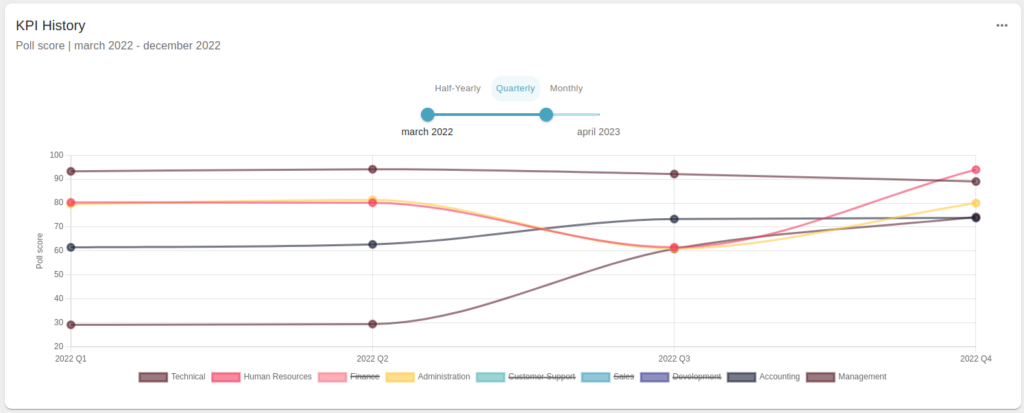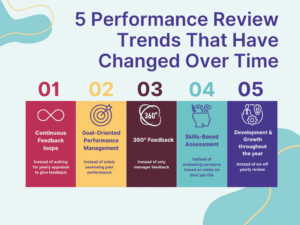Team performance is critical to the success of any organization. Whether you’re working in a small startup or a large corporation, high team performance is essential to achieving your goals. However, driving high team performance can be a challenge. It requires leadership, communication, and a willingness to learn and adapt. In this blog post, we’ll share 10 incredibly useful tips to drive high team performance.
What is Team Performance ?
Team performance refers to the ability of a group of individuals to work together towards a common goal, effectively and efficiently. It is an essential element of organizational success and has a significant impact on achieving the organization’s objectives.
In today’s highly competitive business environment, team performance is crucial. A team that performs well can achieve better results, be more innovative, and have a better chance of success. Successful team performance requires effective communication, collaboration, and trust between team members. It also requires a clear understanding of roles and responsibilities, shared goals, and a commitment to achieving them.

Why is it important ?
There are several reasons why team performance is important for an organization. First, it improves productivity. When a team works well together, they can accomplish more in less time. This is because each team member can focus on their strengths and rely on their colleagues to cover their weaknesses.
Second, it enhances employee engagement. When employees work in a high-performing team, they are more likely to be motivated, engaged, and committed to their work. This can lead to higher levels of job satisfaction and lower turnover rates.
Third, it promotes innovation. A team that works well together is more likely to generate new and creative ideas that can lead to new products or services, improved processes, and increased revenue.
When a team works well together, they can accomplish more in less time.
Here are some examples of team performance in an organization:
Sales team: A high-performing sales team can achieve better results by working together. By sharing their experiences, techniques, and strategies, they can increase their success rates and close more deals.
Engineering team: In an engineering team, team performance is essential to ensure that projects are completed on time and within budget. By collaborating and sharing ideas, engineers can solve complex problems and develop innovative solutions.
Customer service team: A customer service team that performs well can provide better support to customers. By working together, team members can provide quick and effective solutions to customer problems, leading to higher customer satisfaction rates.
How to manage Team Performance ?
Managing team performance is a critical aspect of any organization. A high-performing team can accomplish great things, while a low-performing team can hold the entire organization back. As a manager, it is your responsibility to manage team performance successfully.
By providing some tips, we’ll explore how to manage team performance successfully.
1. Set clear goals and expectations
Set clear expectations for your team members from the beginning. Be specific about what is expected of them, and provide them with the necessary resources to achieve their goals.
When everyone on the team knows what they are working towards and what is expected of them, it is easier to achieve high team performance.
2. Communicate effectively
Communication is key to any team’s success. Make sure everyone knows what is going on, and there is open and honest communication among team members.
Email has long been the standard for professional communication, and it continues to be a reliable and secure way to exchange information in the workplace. However, as technology has evolved, new alternatives have emerged that offer a more user-friendly experience.
One such example is Slack, which provides a streamlined and intuitive platform for team collaboration. While email remains a valuable tool for many workplace communication needs, the availability of more user-friendly alternatives like Slack can greatly enhance team communication and collaboration.
3. Provide regular feedback
Provide feedback regularly to your team members so they know how they are performing and what they need to improve on. Feedback can be both positive and constructive, but it should be always timely, specific, and actionable.
Discover how our feedback module allows you to ask & receive feedback in few clicks
4. Foster a growth mindset
Encourage a growth mindset within your team, where everyone is open to learning, trying new things, and embracing challenges.
Provide opportunities for training and development, so team members can continually improve their skills and knowledge.
5. Use technology to your advantage
Use technology to monitor team performance and identify areas for improvement. This can include software that tracks KPIs or project management tools that facilitate collaboration.
6. Foster a positive work environment & recognize achievements
Foster a positive work environment that promotes collaboration, trust, and open communication.
Recognize and celebrate achievements, both big and small. This helps motivate the team and creates a positive team culture.
7. Embrace diversity and inclusivity
See how our praise module allows teams to spread joy and celebrate successes
Embrace diversity and inclusivity within your team. Different perspectives and experiences can lead to more innovative solutions and better team performance.
Note that inclusion is about the degree to which all team members feel that they are part of the team (belongingness) and that they can be their authentic self (uniqueness).
We developed a reflection canvas to observe the current inclusion situation in your team. It will help you to think about what you can do concretely to be even more inclusive. You can try it out, it’s free to download
8. Encourage work-life balance
Encourage work-life balance among your team members. A healthy work-life balance leads to happier, more productive employees.
9. Build trust
Building trust among team members is critical to high team performance. Encourage honesty, transparency, and open communication to foster a culture of trust.
10. Continuously monitor and adjust
Continuously monitor team performance and adjust your approach as necessary. Stay flexible and adaptable to respond to changing circumstances.

This does not have to be a lengthy or complicated procedure. Our Team Listening module helps you to easily pulse your teams and measure what really maters. These scans give you a clear view on how employees perceive the current performance of their team and give insights in where there is still improvement needed.



